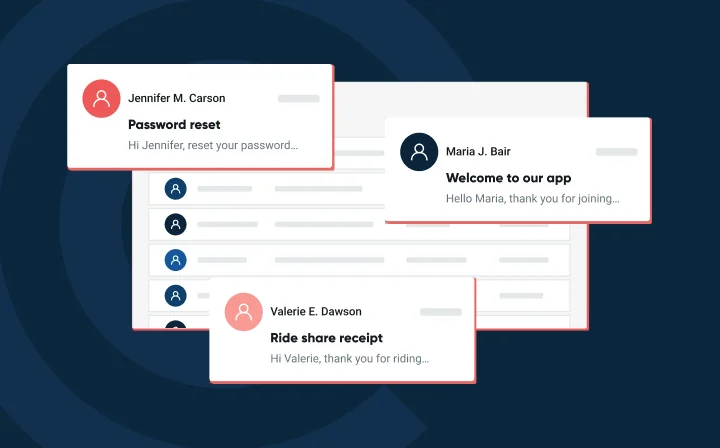Gmail expands BIMI support: What it means for email senders


Email authentication and brand protection are key ingredients for a successful email program. Google’s latest updates to its BIMI support for Gmail represents a continued industry focus on securing the inbox. How does BIMI protect senders and their brands and build trust? In this post, we’ll explore the why, the how, and what this update means for senders.
Google has announced two major updates to its BIMI support, set to roll out gradually starting September 24, 2024:
Let’s dive deeper into these changes and what they mean for email senders.
BIMI, or Brand Indicators for Message Identification, is an email specification that allows organizations to display their logo next to authenticated emails in recipients’ inboxes. It works alongside existing email authentication protocols like DMARC, SPF, and DKIM to provide visual confirmation of an email’s legitimacy. By implementing BIMI, senders can enhance brand recognition, increase recipient trust, and potentially improve email engagement rates.
Previously, BIMI required a Verified Mark Certificate (VMC), a checkmark issued to brands based on their logos bearing a registered trademark. Now, Gmail is introducing support for Common Mark Certificates (CMCs), a new type of BIMI certificate issued by Certificate Authorities.
CMCs allow a broader range of senders to utilize BIMI, even if they don’t have a registered trademark. With a CMC, the sender’s brand image will be displayed in Gmail, just without the verified checkmark that accompanies VMCs.
For senders using VMCs, Google is expanding the visibility of the verified checkmark icon. Previously only visible on Gmail’s web interface, the checkmark will now appear on the Gmail apps for Android and iOS devices.
These BIMI updates have significant implications for email marketers and senders, let’s break down the top ways BIMI impacts sender reputation.
By displaying verified brand logos and checkmarks, BIMI helps recipients quickly identify legitimate emails. This visual confirmation can lead to higher open rates and engagement.
The introduction of CMCs allows more businesses to benefit from BIMI, even if they don’t have registered trademarks. This democratizes access to brand protection in the inbox.
With verified checkmarks coming to mobile Gmail apps, senders can bring more brand recognition across devices.
BIMI requires the adoption of strong authentication practices, particularly DMARC. This raised bar for security benefits the entire email ecosystem by making it harder for bad actors to spoof legitimate brands.
Implementing BIMI signals to mailbox providers that a sender is committed to best practices. This can positively influence sender reputation over time, potentially improving inbox placement rates.
To take advantage of BIMI for your outgoing emails to Gmail and other supporting platforms:
Remember, while CMCs provide an easier entry point to BIMI, obtaining a VMC offers the highest level of verification and trust indicators to your recipients. Industry adoption for these specifications can be slow, want to gain an edge in the inbox? Then think about getting the highest level of authentication now.
Google’s expansion of BIMI support underscores the growing importance of visual trust indicators in email. As we’ve said, as more mailbox providers adopt BIMI, the senders who implement it early will have a competitive advantage in the inbox.
These changes also reflect a broader trend towards stronger email authentication and security practices. Senders who prioritize these aspects of their email program are more likely to see improved deliverability and engagement in the long run.
At Sinch Mailgun, we’re committed to helping our customers navigate the evolving landscape of email authentication and deliverability. Our platform makes it easy to implement authentications like DMARC, SPF, and DKIM. We’re excited to see how these new BIMI options will help our customers build trust and improve their email performance.
As the email industry continues to evolve, staying informed and adapting to new standards like BIMI will be crucial for maintaining a strong sender reputation and ensuring your messages reach the inbox.